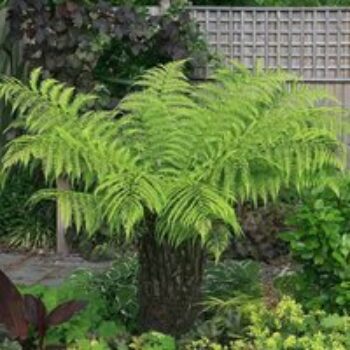- Migration in the Colombian Amazon was not a state project but a consequence of the army’s armed conflict with the FARC and the emergence of drug trafficking that grew in its shadow.
- Although the peace process began in 2017, changes that have occurred since then have given rise to new criminal groups after the guerrillas were eradicated.
- Although the Guiana Shield has escaped large-scale deforestation, the region is home to tens of thousands of wildcat gold miners exploiting mineral resources in the thinly populated hinterlands of Venezuela, Guyana, Suriname and French Guiana.
The modern history of internal migration in Colombia began in a manner that was not unlike the processes organized by the governments in Brazil and the other Andean countries in the 1960s and early 1970s. However, that process was derailed first by a civil war and subsequently by the production of illicit drugs, largely because of tactics pursued by the Fuerzas Armada Revolucionarias de Colombia (FARC). The conflict effectively suppressed state infrastructure investment while freezing land acquisition by middle-class families and investors. At the same time, however, it fuelled the migration of displaced peasants, who opted to cultivate coca under the protective umbrella of the FARC.
The conflict officially ended in 2017 via the so-called Peace Process, which brought momentous change to the Colombian Amazon. The FARC no longer exists as an organized military entity, but it has been replaced by criminal groups composed of demobilized guerillas and militia members. Unfortunately, the state has not established a meaningful presence in the region and the cessation of hostilities has triggered a land rush supercharged by the drug trade and the cattle industry.

Migratory pathways
Before the civil war, the administration of President Carlos Lleras Restrepo (1966–1970) created the Instituto Nacional de Colonización (INCOR) in an attempt to respond to the demand for land by the rural poor. The strategy was supported by multiple grants from The World Bank, including The Caquetá Land Colonization Project, which sought to expand, organize and support the spontaneous colonization process of settlers moving from Huila in the previous two decades. Unfortunately, these were not particularly successful, although the government support consolidated the now-predominant cattle production model.
Caquetá was both a source and a sink of refugees in the 1980s, as people moved within the country to escape violence. During the 1990s and 2000s, the department was a net source of migrants, as an estimated 100,000 people were forced to vacate approximately 450,000 hectares (1.11 million acres) of land. Many moved to Bogotá. As of 2020, the department of Caquetá had a population of about 300,000 inhabitants, 99 per cent of whom were descendants of immigrants who had moved to the region in the last fifty years.
A similar history explains the settlement of the Colombian Putumayo, which occurred originally in conjunction with the advent of oil exploration and was fed by the movement of individuals from the adjacent Andean highlands. Although cattle ranching occupies the largest area, deforestation was largely driven by coca cultivation during most of the 1990s and 2000s. As in Caquetá, ranchers consolidated smaller landholdings that were originally created by coca farmers.

Migration into Meta and Guaviare in the 1990s and 2000s was almost entirely linked to the production of coca leaf and efforts by the FARC and other militias to extend their influence over the landscapes at the edge of the agricultural frontier. Successive waves of peasant settlers have occupied the landscapes surrounding Parque Nacional Natural Sierra de la Macarena, which the FARC has used as a staging area and refuge since the 1960s.
Their operational tactics changed in the 1980s, when they embraced the illicit drug trade as a source of revenue and actively protected peasant farmers growing coca leaf. Roads did not exist in the forest frontier, nor was it advantageous for coca growers to colonize landscapes accessible by vehicular transport. Consequently, the coca growers and the influence of the FARC expanded by using forest trails and river networks.
The peace process has radically changed this dynamic. Land speculators are financing the relocation of small farmers, who are encouraged to ‘move on’ as their original holdings are consolidated into cattle farms that are now accruing value as the region opens to investment. The central government hopes to limit development in the buffer zones around both Macarena and Chiribiquete national parks, and has limited its infrastructure investment to a limited number of major arteries; however, the local officials and land speculators have been building secondary and tertiary roads at an alarming rate.

Venezuela and the Guianas
Successive Venezuelan governments have viewed the natural resources of the Guiana Shield as an economic asset that should be used for national development. This strategy was formulated in the mid-twentieth century and led to the creation of a state-owned enterprise, the Corporacion Venezolana de Guayana (CVG), to develop mineral and hydrological resources. This decentralized, state-owned conglomerate was established in the 1960s and created a variety of subsidiaries dedicated to the mining and processing of iron ore and steel, bauxite and aluminum, and the development of coal and hydropower energy. The state’s presence was further consolidated in the early 1970s, when President Rafael Caldera (1969–1974, 1994–1999) built a modern highway through the southeastern Gran Sabana region to connect with BR-174, which linked Venezuela with the Brazilian Amazon.
Originally, most of the CVG subsidiaries were efficient producers and competed successfully in international mineral markets; however, their viability as business enterprises declined as their mines aged, industrial assets depreciated and national competitiveness eroded because of mismanagement. The administrations of President Hugo Chávez (1999–2013) and his successor, President Nicolás Maduro (2013–present) bankrupted most of these state-owned business enterprises. Nevertheless, migration into the region has continued because of the allure of the ongoing gold rush, facilitated by the military authorities who now oversee development in the southeastern state of Bolívar.
Guyana and Suriname are coastal countries with historical and cultural ties to the island nations of the Caribbean. Economically they are very dependent on their mineral resources, and they apparently view their Amazonian territories as a natural resource to be exploited when opportunities present. Neither country has designated large areas for protection, and their indigenous territorial systems are relatively small. Most land is held in an unallocated forest reserve. The government of Guyana recently has sought to develop an international transport corridor that would link the emerging agricultural landscapes in Roraima, Brazil, with port facilities in Georgetown. This could change the land-use dynamic along that road as settlers create outposts to provide key services to the transport sector.
The borders among Guyana, Suriname and French Guiana have been managed diplomatically among the colonial powers and the independent states that succeeded them. None of these states seems genuinely interested in colonizing their interior provinces. The border between Venezuela and Guyana is the only remaining contested terrestrial border in the Western Hemisphere. The long-simmering dispute over Guyana’s mineral-rich Essequibo region, which never led to armed conflict, flared up again following the 2015 discovery of an offshore oil deposit potentially worth hundreds of billions of dollars.

Migratory pathways
The Guiana Shield has escaped the large-scale settlement and deforestation that characterize both Amazonian Brazil and Andean countries. This does not mean, however, that it has not been impacted by migration. The region is home to tens of thousands of wildcat gold miners exploiting mineral resources in the thinly populated hinterlands of Venezuela, Guyana, Suriname and French Guiana. These miners are a combination of local inhabitants and fortune-seeking immigrants, mainly Brazilian, whose numbers fluctuate in response to changes in the price of gold. The Suriname government estimates the country has about 20,000 small-scale mining operations, each of which probably employs between five and ten individuals. Most mine owners are native-born Maroons who employ thousands of Brazilian garimpeiros.
It is difficult to know precisely what is transpiring in Venezuela because of the chaotic governance that has characterized the country for the last decade. According to 2011 national census, the municipality of Sifontes had a population of 51,000, but recent reports suggest that this number may have surged to more than 400,000 by 2016. The gold mining region is controlled by the military, which operate numerous mines via joint ventures with Venezuelan businesspeople.
Many of these immigrants may not be gold miners, however, but individuals importing scarce goods from Brazil or seeking to emigrate. At the end of 2022, approximately 70,000 Venezuelans were living in Roraima and Amazonas, with some 33,000 in makeshift shelters and camps. Most, if not all, survive by working in the informal economy.
Banner image: A canoe of Indigenous design in Colombia. Image by J.J. Javier via Nia Tero.
“A Perfect Storm in the Amazon” is a book by Timothy Killeen and contains the author’s viewpoints and analysis. The second edition was published by The White Horse in 2021, under the terms of a Creative Commons license (CC BY 4.0).
To read earlier chapters of the book, find Chapter One here, Chapter Two here, Chapter Three here, Chapter Four here and Chapter Five here.

Chapter 6. Culture and demographic defines the present











